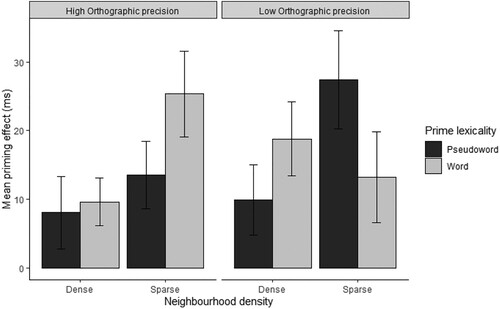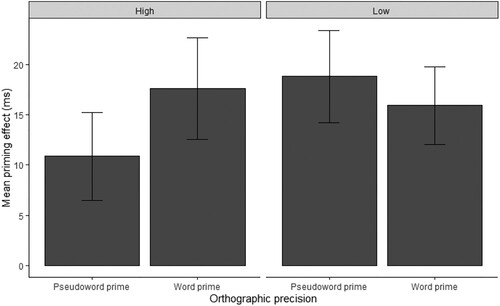Figures & data
Figure 1. An overview of the three experimental sessions. From “Phonological precision for word recognition in skilled readers,” by M.M.Elsherif, L.R.Wheeldon, and S.Frisson, 2022, Quarterly Journal of Experimental Psychology, 75(6), p. 1025. CC BY-NC-ND.

Table 1. The individual difference measures used in the current experiment and their groupings. From “Phonological precision for word recognition in skilled readers,” by M.M.Elsherif, L.R.Wheeldon, and S.Frisson, 2022, Quarterly Journal of Experimental Psychology, 75(6), p. 1025. CC BY-NC-ND.
Table 2. Descriptive statistics for word target characteristics.
Table 3. Descriptive statistics for pseudoword target characteristics.
Table 4. Means and standard deviation of all measures.
Table 5. Correlations between tasks.
Table 6. Components produced by the PCA.
Table 7. Mean response times and proportion correct for each prime lexicality, relatedness and NHD condition for word naming.
Table 8. The minimal model output for RTs in the word naming task.
Figure 2. Reaction time (RT) priming effects (in ms) for high- and low-N targets preceded by word and pseudoword primes and separated by the orthographic precision component. Positive priming effects reflect facilitation for targets preceded by related primes, relative to unrelated primes. Error bars represent 95% confidence interval for each condition.

Table 9. Mean response times and proportion correct for each prime lexicality, relatedness and NHD condition for pseudoword naming.
Table 10. The minimal model output for RTs in the pseudoword naming task.
Figure 3. Reaction time (RT) priming effects (in ms) for pseudword targets preceded by word and pseudoword primes and separated by the orthographic precision component. Positive priming effects reflect facilitation for targets preceded by related primes, relative to unrelated primes. Error bars represent 95% confidence interval for each condition.

